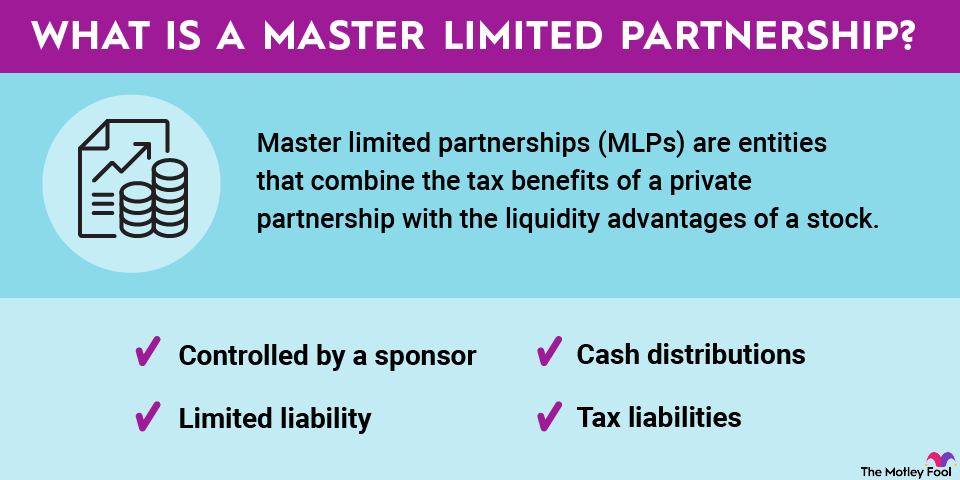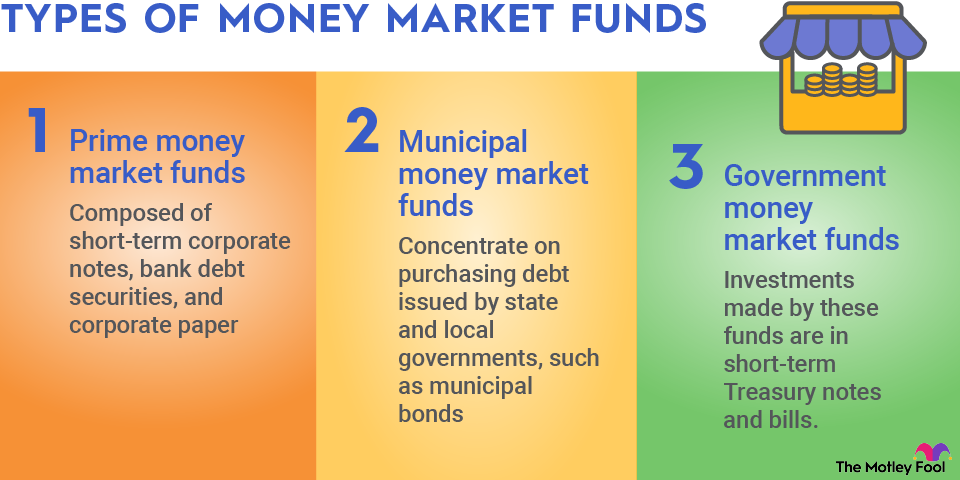Master limited partnerships (MLPs) are entities that combine the tax benefits of a private partnership with the liquidity advantages of a stock. MLPs don't pay taxes at the federal level. Instead, they pass through income, losses, and deductions to their investors. MLPs often make lucrative cash distributions to their LP investors, making them attractive income investments.

What is the meaning of a master limited partnership (MLP)?
A master limited partnership (MLP) is a publicly traded limited partnership (LP). Being publicly traded means investors can easily buy and sell MLP units on a stock exchange through their brokerage account. Meanwhile, as a limited partnership, MLPs have certain tax advantages. LPs are pass-through entities. That means they pass all profits, losses, deductions, and credits through to investors. LPs don't pay federal taxes on their revenue like most businesses. Instead, LP investors pay taxes on their portion of an MLP's earnings.
Publicly Traded Company
Like real estate investment trusts (REITs), the IRS set strict criteria for MLPs to prevent companies from exploiting the structure. MLPs must get at least 90% of their income from qualifying sources. Qualifying income includes profits from the exploration, production, or transportation of natural resources or from real estate activities. Even though real estate companies can operate as MLPs, most utilize the REIT structure. Most MLPs are in the energy sector.
What are some key characteristics of a master limited partnership (MLP)?
MLPs have many unique features compared to a traditional corporation, including:
- Controlled by a sponsor: Like traditional LPs, a general partner (GP) controls the MLP. The GP can be another publicly traded company, a privately held entity, or an entity absorbed by the MLP. The GP manages the MLP's day-to-day operations. GPs typically own an interest in the MLP. In addition, they usually earn management fees called incentive distribution rights (IDRs), which give them the rights to a percentage of the MLP's distributions (similar to dividend payments) after they reach a specific threshold.
- Limited liability: Limited partners have limited liability in the MLP up to the amount they invested in the entity. That protects them from legal issues and bankruptcy.
- Cash distributions: Most MLPs distribute a significant percentage of their free cash flow to investors each quarter. These distribution payments usually make up most of an MLP's total return. MLPs tend to have high income yields, making them attractive income investments.
- Tax liabilities: Limited Partners report their share of an MLP's gains, income, losses, and deductions on their personal tax returns. They receive a Schedule K-1 for tax purposes. In some cases, limited partners will need to file additional state returns to report MLP income.
What are the benefits and drawbacks of a master limited partnership?
Investing in MLPs can have several advantages, including:
- Attractive passive income from high-yielding distribution payments.
- Higher total return potential compared to fixed-income investments. MLPs can grow their earnings, enabling them to increase their distributions while also delivering some unit price gains.
- Tax-advantaged income. Investors can deduct 20% of their distributions from their taxable income until a benefit passed in 2017 expires in 2025.
- Relatively lower-risk investments.
- Liquidity benefits. You can buy and sell MLP units through your brokerage account during market hours.
However, investing in MLPs also has its drawbacks, including:
- More complex tax filing. K-1s can be complicated, may require filing additional state tax returns, and can delay an investor's taxes (MLPs typically send K-1s in mid-March).
- Limited upside potential. The bulk of the return comes from distribution payments.
- The potential for a distribution cut if the MLP's income declines or it faces financial hardship.
- Lack of diversification since most MLPs operate in the energy sector.
Related investing topics
An example of a master limited partnership
Many pipeline companies operate as MLPs. Enterprise Products Partners (EPD -0.01%) is one of the largest publicly traded partnerships. It's a leading provider of energy midstream services in the U.S. with an extensive network of pipelines, storage terminals, processing plants, petrochemical complexes, and export capacity. It handles natural gas, natural gas liquids, crude oil, refined products, and petrochemicals.
Enterprise Products Partners is one of the best MLP investments. The MLP delivered its 25th consecutive year of increasing its cash distribution in 2023. It offered a high-yielding payout (around 7.5% in mid-2023) that will likely continue rising in the future. Enterprise has an excellent track record of completing organic expansion projects and making value-enhancing acquisitions to grow its cash flow and distribution.


















